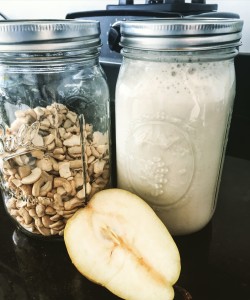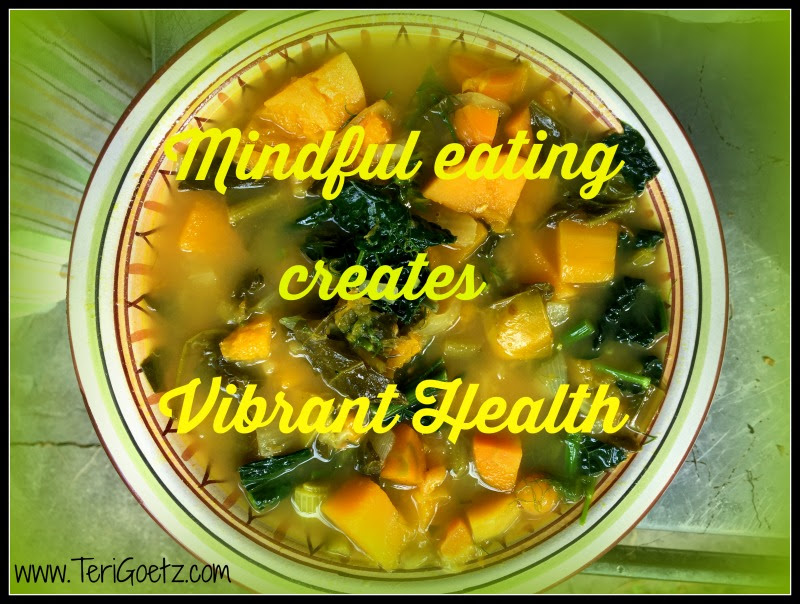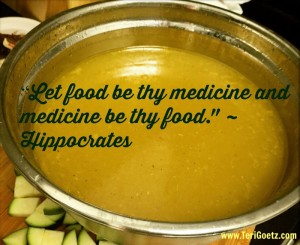 Coconut and nut milks may be healthier alternatives to cow’s milk for many people, especially those following a paleo or elimination diet. For most adults, cutting down or cutting out dairy is a great idea. From a Chinese medicine perspective, dairy is basically phlegm! And, if you are like most Americans, your diet is already full of mucus producing, inflammatory foods.
Coconut and nut milks may be healthier alternatives to cow’s milk for many people, especially those following a paleo or elimination diet. For most adults, cutting down or cutting out dairy is a great idea. From a Chinese medicine perspective, dairy is basically phlegm! And, if you are like most Americans, your diet is already full of mucus producing, inflammatory foods.
I recommend coconut, nut, or rice milks as alternatives to my patients, but there are definitely some issues to consider, especially if you have any kind of digestive issues including IBS or IBD.
Many packaged non-dairy milks like coconut milk and almond milk as well as non-dairy (whole food) creamers contain the following dicey ingredients:
sugars – Probably goes without saying, but um, sugar is killing us. Refined is worse.
guar gum – There has been a bit of controversy over this so I’ll go into it a bit more. Made from the seeds of the guar or cluster bean plant, it thickens foods, improves texture, and stabilizes ingredients. Used since the 50s, guar gum is also added to foods to boost fiber content. It is generally considered safe, though not necessarily as a supplement as it can block the esophagus in larger quantities because it holds 20 times its volume in water, among other issues. However, guar gum poses some potential problems. Consuming guar gum powders while eating may significantly reduce the absorption of antioxidant carotenoids, such as beta carotene, lycopene, and lutein found in many vegetables.
Guar gum has been studied and seems pretty safe if you don’t have a gut issue like SIBO (small intestinal bacterial overgrowth) or a leaky gut (and more people have leaky gut than realize it).
Because of its high fiber content it can cause gas and bloating, but, interestingly, studies have shown that it actually reduces blood glucose and insulin demands with supplementation, and may help with weight management. Long term studies have yet to bear this out. The jury is still out on this one.
carrageenan – Made from red seaweed, this ingredient is found in many health-food products as a thickener and emulsifier and found in many health-food products. If it’s from seaweed it must be healthy, right? Not so much. It turns out that it causes inflammation in the body and increased intestinal permeability (leaky gut), and has been linked to colon irritation and ulcers. It appears to trigger an immune response just like when a pathogen like Salmonella enters the body. Some say it’s okay in moderation, others say uh-uh, and that it is potentially carcinogenic.
According to veteran carrageenan researcher Joanne Tobacman, MD as reported in Prevention, “Carrageenan predictably causes inflammation, which can lead to ulcerations and bleeding.” Not to mention it has no nutritional value. That’s all I need to hear!
titanium dioxide – Famously used as a sunscreen and colorant, titanium dioxide is also used in many paints, papers, and skin products. (Why are we eating this?) It has been linked to cancer in rats in some studies.
dipotassium phosphate – This chemical, which is used to control acidity and prevent coagulation, is generally regarded as “safe”…but I’d rather not add it to my diet.
Bisphenol-A (BPA): Welcome to the packaging dilemma. BPA is used in consumer goods from reusable drink containers to DVDs to auto parts. It’s also used to line many cans, as well. It is leached out from the lining or container when it comes in contact with high fat, salty, or acidic contents. So, if you’re buying canned coconut milk (or anything!), make sure it says, BPA-free!
The CDC found 93% of adults had BPA in their urine! (PS, quite unnerving is that it’s also in baby formula packaging.)
So what to do?
I personally can’t digest milk very well and it definitely causes inflammation in me, so I have to do without, or substitute. For a few years I was buying packaged milk alternatives and suddenly I started to develop digestive problems and increased pain in my joints. The light bulb went off in my head: maybe it’s the additives and gums in the packaged milks! I was never particularly comfortable with them, but felt I didn’t have much choice. Sure enough, I took them out of my diet and everything returned to normal. I learned how to make my own milks at home for a fraction of the price. They are tastier, cleaner, and healthier.
I have to mention one other thing about almond milk in particular (and I’m totally going to bum your high on this one). Growing almonds and making almond milk has a huge and negative imprint on the environment. According to Mother Jones, “Given that it takes 1.1 gallons of water to grow a single almond in California, where 80 percent of the world’s almonds are produced, drenching the finished product in yet more water seems insane”
And, they point out, it’s not nearly as nutritious as a handful of almonds.
The bottom line is that we have to balance this all out and consider our impact on the environment as well as human rights issues. Buying organic and fair trade, whenever possible, will help.
So, this environmental argument could be made for cows, too, but that’s not what this article is about! I am talking about unnecessary added ingredients…and there you have it.
Now, let me show you how completely easy it is to make your own coconut or cashew nut milk!
Next week, I’ll talk about the benefits of coconut and nut milks!
Enjoy ~
Fast and Easy Coconut Milk
Ingredients
1.5 – 2 cups flaked unsweetened coconut (more will make a thicker milk)
4 cups of hot (not boiled) water.
optional: vanilla extract or cinnamon
1 or 2 dates for sweetness (if you don’t want sugar, avoid this)
Tools:
blender
cheesecloth of “nut milk bag”
bowl glass jar or bottle to store milk in
Put it all in a blender and mix for 2-3 minutes in a Vitamix or other high-powered blender, and a few minutes more for a regular blender.
Set cheesecloth or nut bag over a bowl and pour blended mixture over it, squeezing out the milk. (You’ll get quite a bit of milk by squeezing, but watch your hands—it can be hot.)
If you need to do it in two stages, add half the water to all the coconut and finish the process as above. Transfer pulp back into blender with remaining water and repeat.
Delicious home-made cashew milk
Ingredients:
1 cup of raw, unsalted cashews, soaked overnight in water
3 cups of hot (but not boiled) water.
optional: vanilla extract or cinnamon
1 or 2 dates for sweetness (if you don’t want sugar, avoid this)
You essentially follow the same process as for coconut milk above! How easy is that? The only difference here is that I actually don’t strain my cashew nut milk because I like the fiber and it’s pretty indistinguishable to me.
Try both of these right after they’re made, when they’re hot and fresh. What a winter treat!

 Bone Broth: the Why
Bone Broth: the Why
